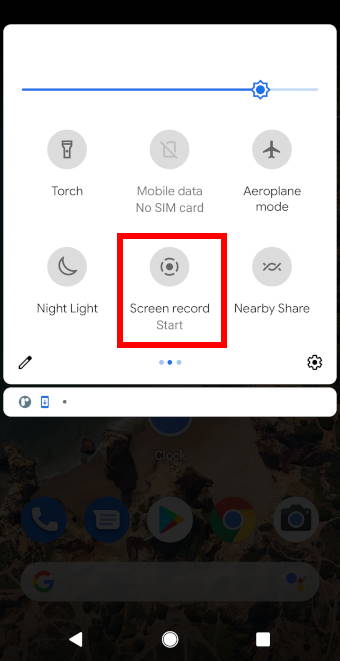![]() Android 11 has finally included a native screen recorder.
Android 11 has finally included a native screen recorder.
Although some Android phones such as the Samsung Galaxy s10 already have a native screen recorder, it was only available to Samsung phones. With the Android 11 native screen recorder, Android devices are now able to take screen recordings without the use of third-party apps.
Read on to learn more about this feature, how to use it and some questions you may have about it.
What is native screen record in Android 11?
As seen by its name, this feature allows users to take a recording of their device screens without using an application.
Although there are many third-party apps which offer decent screen recorders for Android, the new native screen recorder in Android 11 reduces the hassle for users when they want to take a screen recording.
Since it is a native screen recorder, the recordings can be saved and directly backed-up to the Google Photos app. This allows users to be able to view and edit their recordings through the Google Photos app on different devices.
However, do note that as the screen recorder takes a video of what is displayed on the screen when it’s turned on, sensitive information such as passwords and usernames will be captured in the recording. These can be edited out or censored after the recording is saved using video editing apps or through the Google Photos app.
Anyway, now you are not limited by the static screenshots when you want to share the screen. You can share it as a live video with sounds.
How to use native screen record in Android 11?
To allow for easy access to the Android 11 screen recorder, users are able to access and use the feature through the quick settings menu. The following steps will show you how to use native screen record in Android 11.
To access the quick settings menu, pull down twice from the top of the screen (or status bar if not in the immersive mode).
Scroll through the quick settings menu until you see the screen record icon. Tap on it to begin recording.
If you cannot find the button, you can tap the Pencil icon to add it.
Step 2: Begin recording
After tapping on the screen record icon, a pop-up for screen recorder settings will appear where you can adjust the settings for the screen recorder.
As shown below, users can change the settings for the screen recorder in the section highlighted in green (B), including:
- Record audio.
- Show touches on screen (when you touch the screen)
For audio recording, if you turn it on, you have three different options depending on your needs:
- Microphone.
- Device audio sound from the device including music, calls, and even ringtones.
- Device audio and microphone.
Of course, you can choose to turn off audio if you want. Most video editing apps allow you to add audio tracks later on.
After adjusting the settings, tap on start (A) and the screen recording will begin.
Step 3: Stop recording
After tapping on Start, the screen recording would start after 3 seconds. You can check if the screen recording has started by pulling down the quick settings panel as shown below.
To stop the recording, tap on the screen recorder notification.
After stopping the recording, the screen recording will be processed and saved.
You can view the screen recording either by tapping on the notification or through your phone’s Photos app. The recording can be found under the Movies folder in the Photos app.
Can native screen record in Android 11 used with any apps?
Yes, native screen record can be used on any apps in Android 11. It is an inbuilt feature in the Android 11 system and the screen recorder essentially takes a video of what is being displayed on the screen of the device.
Can I customize the video resolution or frame rate for native screen record in Android 11?
No, the screen recorder will use the current screen resolution and standard frame rate.
So, for some Android phones which allows you to set different screen resolutions, you can set up the screen resolution first, then start to record to get desired video resolution.
The refresh rate of the screen will be ignored.
Do you know how to use native screen recorder in Android 11 now?
If you have any questions on how to use native screen recorder in Android 11, please let us know in the comments section below.
For other Android 11 guides, you may check this page.
If you are still on other versions of Android, you may check these guides:
- For Android Pie (Android 10), please check the Android 10 guides page.
- For Android Pie (Android 9), please check the Android Pie guides page.
- For Android Oreo (Android 8.0 and 8.1), please check the Android Oreo guides page.
- For Android Nougat (Android 7.0 and 7.1), please check the Android Nougat guides page.
- For Android Marshmallow (Android 6.0), please check the Android Marshmallow guide page.
- For Android Lollipop (Android 5.0 and 5.1), please check the Android Lollipop guide page.
- For other general Android questions or problems, please check the Android 101 page.
It is time to enjoy your Android 11!




Leave a Reply